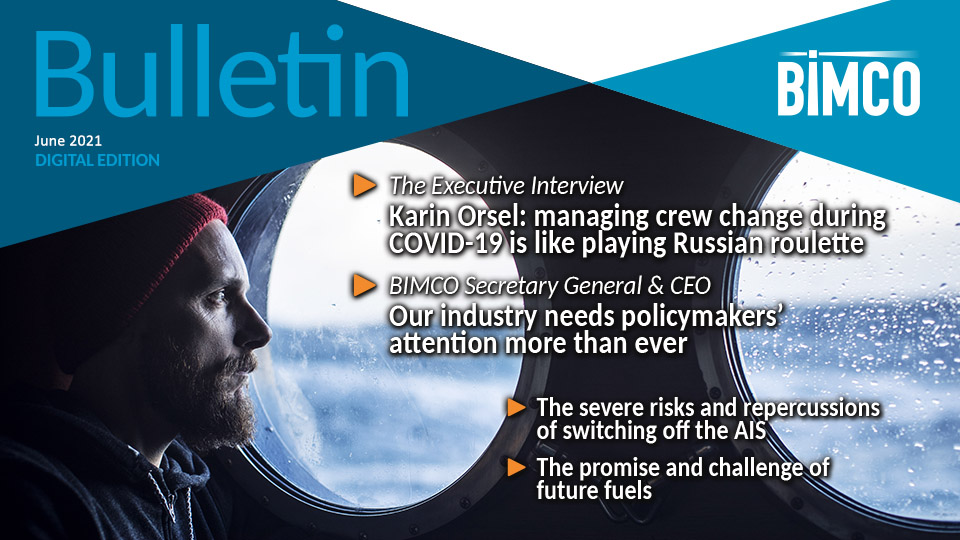United States - CSA round-up for December 2016
Overview
The Trump Cabinet
During the month of December, President-Elect Trump has named a number of individuals to key positions in his Cabinet. Of particular note for the maritime industry are the named appointees for the Department of Homeland Security (General John Kelly, US Marine Corp Retired) and the Department of Transportation (Elaine Chao). General Kelly has a long and storied military history and if the past is any lesson, he can be expected to place a military like management style in place at DHS. While little is known about General Kelly’s political leanings, it is expected that while focusing on the implementation of President-Elect Trump’s immigration reform programme, he will most certainly be supportive of the US Coast Guard, as a sister military organisation. Ms Chao has a long history of service in the US government, previously serving as the Deputy Secretary of Transportation under President George H. W. Bush and as Secretary of Labor under President George W. Bush. Ms Chao has long been a friend of the maritime industry and brings much needed expertise to DOT. Ms Chao is also married to Senator Mitch McConnell, the majority leader of the Senate.
Status of US type approvals for ballast water management systems
In early December, the USCG issued its first US type approval certificate to Optimarin AS, a system which uses filtration and UV to treat the ballast water. The system is rated for up to 3000 cubic meters per hour flow rate, is certified for use in all salinities and in temperature ranges from 0 to 55 degrees C. In late December, the USCG issued its second and third type approvals to OceanSaver AS (electrochlorination) and Alfa Laval Tumba (UV). This is a welcome event from the industry’s perspective and based on comments from the USCG, expect more US type approval certificates to be issued in the near future. Information on all three type approvals are available on the USCG Marine Information Exchange Website at http://cgmix.uscg.mil/Equipment/Default.aspx by opening the top banner link entitled “Search Approved Equipment List, CG Mix Home Page”, then “Search CG Mix, USCG Approved Equipment, Approved Equipment Search”, then enter “Ballast Water Management System” from the scroll down menu in the approval series section. All three type approval certificates can then be opened and viewed.
Status of the Vessel Incidental Discharge Act (VIDA) in the US Congress
As previously reported, the Vessel Incidental Discharge Act (VIDA) was contained in the House version of the National Defense Authorization Act. When it was removed from this bill, proponents worked very hard to get it included in another bill in early December to no avail. VIDA is dead in the water for this Congress but it is most certain that we will make another run in the next Congress (and administration) which may look more favourably on our arguments as to why VIDA is so badly needed.
EPA Request for Comments on Affirmative Determination of Adequate Reception Facilities in Puget Sound, Washington, USA (Federal Register, November 7, 2016, pages 78141-78143)
For a number of years, the State of Washington has been moving towards the establishment of a No Discharge Zone (NDZ) for sewage (treated or untreated) for the entirety of Puget Sound. One of the final steps in EPA’s formal recognition of this NDZ is a determination as to whether adequate reception facilities exist. EPA published a request for comments on their preliminary determination that adequate reception facilities do exist. CSA has submitted comments challenging this determination for a variety of reasons. Relevant portions of our comment submission are found below:
- The first assumption made with which we disagree is that large oceangoing commercial vessels have sufficient holding tanks to preclude the need to discharge treated sewage in Puget Sound “with some exceptions”. In mid-2012, CSA conducted a global survey of sewage management configurations and practices aboard large commercial vessels. We received responses from 639 vessels of all types. 218 or over 34% of those vessels responding reported no holding tank capacity at all while an additional substantial number of vessels reported holding tank capacity of less than 1 day, which is less than an average time in port. All of these vessels did report having an operational marine sanitation device on board. Thus as regards the assumption that vessels have sufficient holding tanks to preclude the need to discharge sewage….”with some exceptions”, we would assert that these exceptions are a significant number of vessels in the global fleet. Before this assumption is validated, we would suggest that a survey of vessels currently calling in Puget Sound be conducted in order to provide a realistic estimate of vessels which do have sufficient holding capacity since although our survey was global in scope, we were unable to link vessel responses with particular geographic areas in which the vessel called.
- However, the 11 dedicated pump out facilities for the WSDOT ferries, military vessels, Victoria Clipper vessels, the McNeil Island DOC vessels, and vessels calling at the Port of Bellingham cruise terminal and the Alaska Marine Highway vessels, it is noted that two other pump out facilities exist that can serve other commercial vessels. Although, in our review of the list on the Washington Department of Ecology website, it is unclear which of the listings represent these two other facilities given that the list is populated in large part by either dedicated facilities, private marinas or public marinas, all of which are not available for use my large commercial vessels, thus we do not agree that pump out facilities are currently available for large commercial vessel use.
- We note that two more commercial pump out facilities are being installed (one in Seattle for commercial vessels, another in Bellingham, mostly for fishing vessel use), we do not agree that these facilities should be included in the current affirmative determination of availability since they do not exist and the characteristics of these facilities are not known at this time as to their suitability for use by large commercial vessels.
- The remainder of the notice lists a number of mobile units that could be or are “capable of” being used on commercial vessels, mobile pump out vessels (admittedly “primarily for recreational boats, but several have serviced commercial vessels such as charter boats, fishing vessels, US Coast Guard vessels and passenger vessels.”), and approximately 140 companies that “primarily pump out septic tanks, but that can also pump out vessel sewage”. Nowhere in this list of mobile units is the acknowledgement that these units are able to be utilized by large commercial oceangoing vessel other than to suggest that they “could” be utilised. Our concerns relative to this list of mobile units are further detailed in the paragraph below.
- Large commercial vessels and those who service them are subject to a number of maritime security requirements as well as safety and security requirements imposed by the facility at which they are docked. First, any individual which services a marine transportation facility, must be fully documented and carry a transportation worker identification credential (TWIC). Further, the marine transportation facility through which they must pass to access the vessel, must also approve the entry of those persons and equipment through their facility in order to access the vessel. While a TWIC card is a fundamental prerequisite to clearance through a marine transportation facility, the facility may refuse to grant such access for a variety of reasons including company policy and security concerns, all factors entirely out of the control of the vessel calling at their facility. Thus a number of the mobile pump out units counted as “available” to the large commercial vessels calling in Puget Sound, may not actually be “available” in practice either because their operating personnel do not possess TWICs or the facility will not authorize them access to the vessel via their dock areas.
- Finally, a number of marine transportation facilities prohibit the connection/berthing of vessels off shore of a vessel berthed at their facilities for both security and safety concerns. In this case, the use of the identified 21-23 mobile pump out vessels would be prohibited while the vessel is docked at the facility.
Editor’s note
References to the Federal Register may be found at http://www.gpo.gov/fdsys/browse/collection.action?collectionCode=FR. Please note new address and format for Federal Register retrieval due to upgrade in US government website.
References to legislation may be found at http://thomas.loc.gov/ by entering the bill number (HR 802, S 2841) in the “search bill text” block found at the centre of the page.
Feedback or a question about this information?
VPS Bunker Alerts
Veritas Petroleum Services (VPS) publish regular Bunker Alerts based entirely on fuel samples and have kindly permitted BIMCO’s Members to access this information.
The Bunker Alerts are not intended to be an evaluation of overall bunker quality in the port or area concerned, but usually highlight a specific parameter within the fuel which has raised a quality issue.
Latest ice reports for members
Latest piracy reports
Latest industry releasable threats
ELSEWHERE ON BIMCO
Contracts & Clauses
All of BIMCO's most widely used contracts and clauses as well as advice on managing charters and business partners.
Learn about your cargo
For general guidance and information on cargo-related queries.
BIMCO Publications
Want to buy or download a BIMCO publication? Use the link to get access to the ballast water management guide, the ship master’s security manual and many other publications.
About a new business partner
We can help members check new business partners. We also help to recover millions of USD (undisputed) funds every year.





